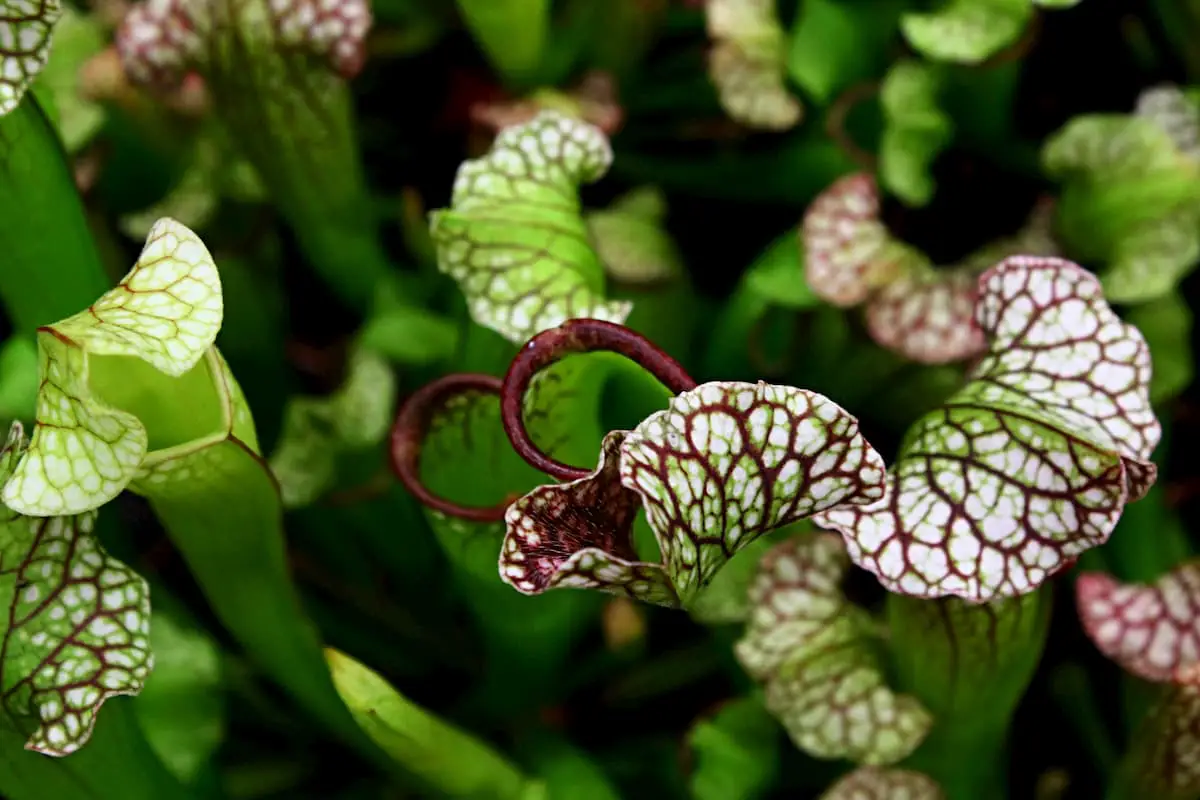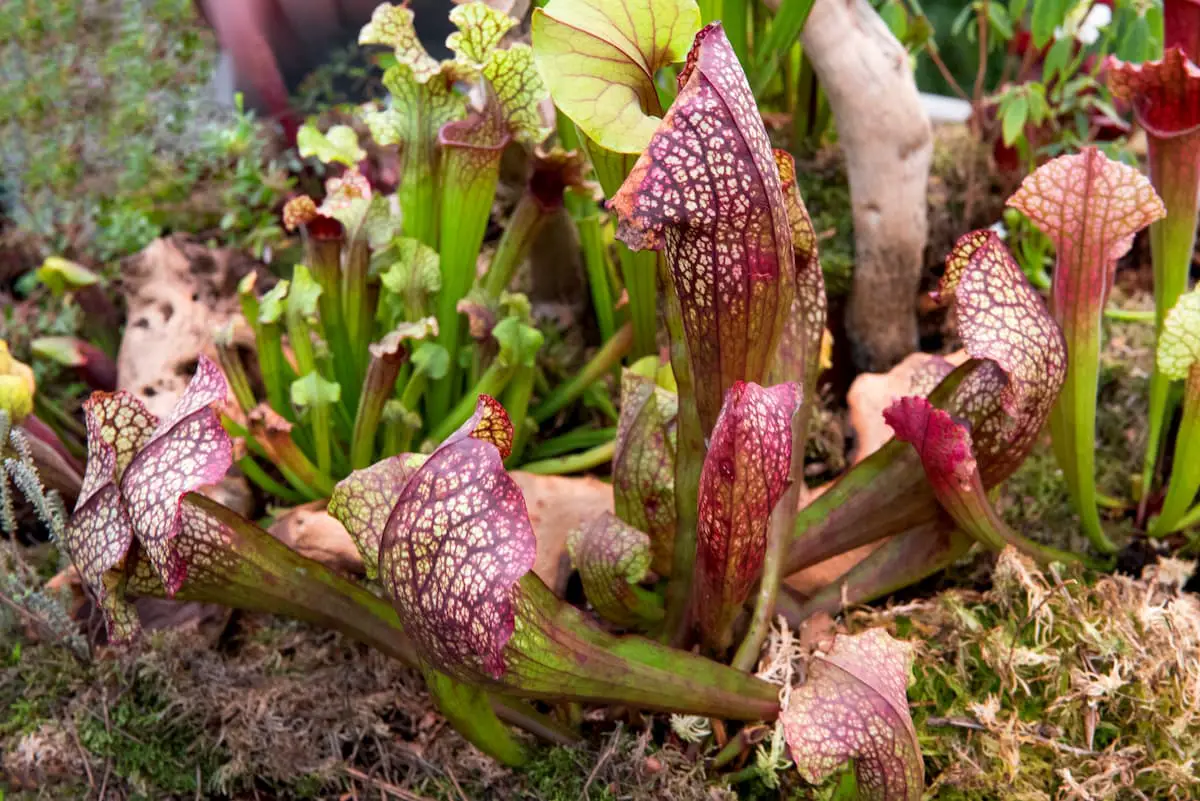Carnivorous meat-eating plants are some of the most beautiful, interesting and even entertaining house plants to keep around. Whether you’re a collector of plants, or just want to give your room a little extra life, adding a carnivorous plant is a fun and interesting way to do that.
However, there is the trouble that carnivorous plants are intimidating to keep up with if you don’t know what you’re doing. They’re a little different than the regular houseplants, so they require special consideration to thrive in their new environment in your home. How do you care for carnivorous plants?
Obviously, the answer is a bit more challenging, then saying that there is only one correct way to care for a carnivorous plant. However, there are a few basic tips you do need to know. One of which is that carnivorous plants naturally inhabit bogs; thus, they prefer to be continuously wet in well-draining soil. Additionally, you want to be constantly keeping an eye on the plant’s water; if you let it go for too long, you could dry out the roots.
This tip is one of the most important because it can go the opposite way for some plants. One of your main watering concerns for many household plants is root rot or just generally over-watering the plant.
With carnivorous plants, this is not the problem you need to be worried about. Instead, the exact opposite is true, though, of course, you do want to ensure that you’re keeping a careful eye on how your plant responds to the watering schedule or system you are implementing.
Regardless, however, the water you use should be distilled or filtered as carnivorous plants are notoriously sensitive to chemicals, and general contaminants to their water supply.
If they’re outdoors, you should also be misting them once or twice a day with water from a spray bottle to keep them healthy and happy.
Another aspect to consider is the sun and how much the plant needs. Carnivorous plants thrive in better indirect and bright sunny areas, so an outdoor patio, balcony, or a southern facing window is the best place for your plant.
They go dormant in the winter months, so it’s strongly recommended that your plant should be moved to a cooler location in the winter months.
How do You Feed a Carnivorous Plant?
Feeding a carnivorous plant is obviously where things differ the most from a regular indoor house plant. Instead of only drinking water, and getting nutrients from its fertilizer, carnivorous plants also eat small bugs — and even small animals like frogs from time to time.
Mostly, however, your plant will need to be eating flies. Feeding a carnivorous plant does come down to whether you are feeding them outside, or inside.
The carnivorous plants are native to areas with mineral-free soil. They’ve adapted to surviving and thriving in areas that offer them few contaminants and minerals within their soil.
Sphagnum peat moss and horticultural sand can be mixed to make a pretty decent “dupe” for the native sands they’ve adapted to. If you can’t get horticultural sand for this mixture, half playbox sand works just as well.
Essentially, you just want to avoid soils that are mixed with dust, silt, clay, and other minerals that would be considered harmful to your plant’s life. As discussed, the mixture doesn’t need to be an exact 50/50; for everyone part sand, you have one part peat.
Instead, you should check with an expert or the seller what the specific plant you are purchasing is more suited for. For example, fly traps would be better with more sand, whereas Nepenthes would prefer more peat.
This is also why you should never feed a carnivorous plant with a fertilizer that you would use with another plant. If you care for your plant properly, they shouldn’t need the feed that is coming from this kind of fertilizer and should be able to collect enough insects from thriving without fertilizer or plant feed.
Feeding your carnivorous plant is where things get a bit tricky anyway, but you need to be careful not to kill your plant by feeding it regardless of your good intentions.
How NOT to Feed Your Plant
We have already discussed how to plant feed and fertilizer isn’t necessary or recommended for a properly cared for carnivorous plants. However, there is more to it than just that. Another critical consideration is that you should never feed a carnivorous plant with raw meat or cheese.
Food that is too large will kill the plant, to start with, but moreover, you should only be feeding your plant insects. There is no need to, and it is not recommended to feed your carnivorous plant more than just flies and other small insects.
In fact, it’s recommended that you follow your plants specified recommendations in terms of feed and ask the seller what they’d recommend you feed them before you start feeding them chunks of raw meat.
How to Feed Your Plant
The next recommendation is that you should only feed your plant one or two flies in a month. Indoor carnivorous plants cannot thrive without help as most homes do not have enough flies or bugs inside to allow them to hunt adequately.
Some experts recommend keeping your carnivorous plant outside on a patio or balcony where it can hunt on its own and have complete sunlight, as is recommended for the type of plant.
Otherwise, if the plant is indoors, you should feed them freeze-dried insects from a pet shop and a culture of wingless fruit flies. Either of these can be found at pet shops, or if your area has a special shop to sell these insects for plants, you can go there.
Demonstrating your plant’s ability to eat and hunt flies and other bugs is okay, but you should not overdo it. You can overfeed plants and cause them to not thrive nearly as much because of it.
Overfeeding a carnivorous plant is another reason some experts suggest that you grow and feed the plant where there is natural access to prey, like flies and other insects, to avoid harming the plant entirely.
You should only be “feeding” your plant if you’re worried that there isn’t enough prey to feed on naturally.
If there are flies in your home, they should be able to catch them on their own, but if you start noticing that they seem to not be getting enough nutrients, you should start considering “feeding” them yourself with tweezers carefully.
Don’t Tease Carnivorous Plants.
You should never try to provoke your flytrap, or any carnivorous plant, to close or “bite” you. Most plants have a limit to how many times they can close and catch their prey, and by teasing your plant with your fingers, you’re going to be making it harder for your plant to feed properly.
As such, these kinds of plants shouldn’t be around an area where curious children or inconsiderate guests could poke and prod at the poor plant. Otherwise, if you let people continue to tease the plant, they will begin to struggle to give themselves proper nutrients and potentially lead to the plant’s death.
Greenfly
There are some types of bugs and infestations that carnivorous plants cannot deal with. Greenfly and red spider mite are among those types of bugs that will begin to damage your plant that they cannot deal with alone. As such, you need to take careful precautions to avoid an infestation of these types of bugs.
Final Thoughts on How to Care For Carnivorous Plants Indoors
I have only been managing my plants for a short time but I have been successful by continuing to read and learn more about these fascinating plants.
I love having them around as they cut down on the flies that get inside and attract attention from visitors who are totally intrigued by the plants as they are so unusual in almost all houses!



Leave a Reply